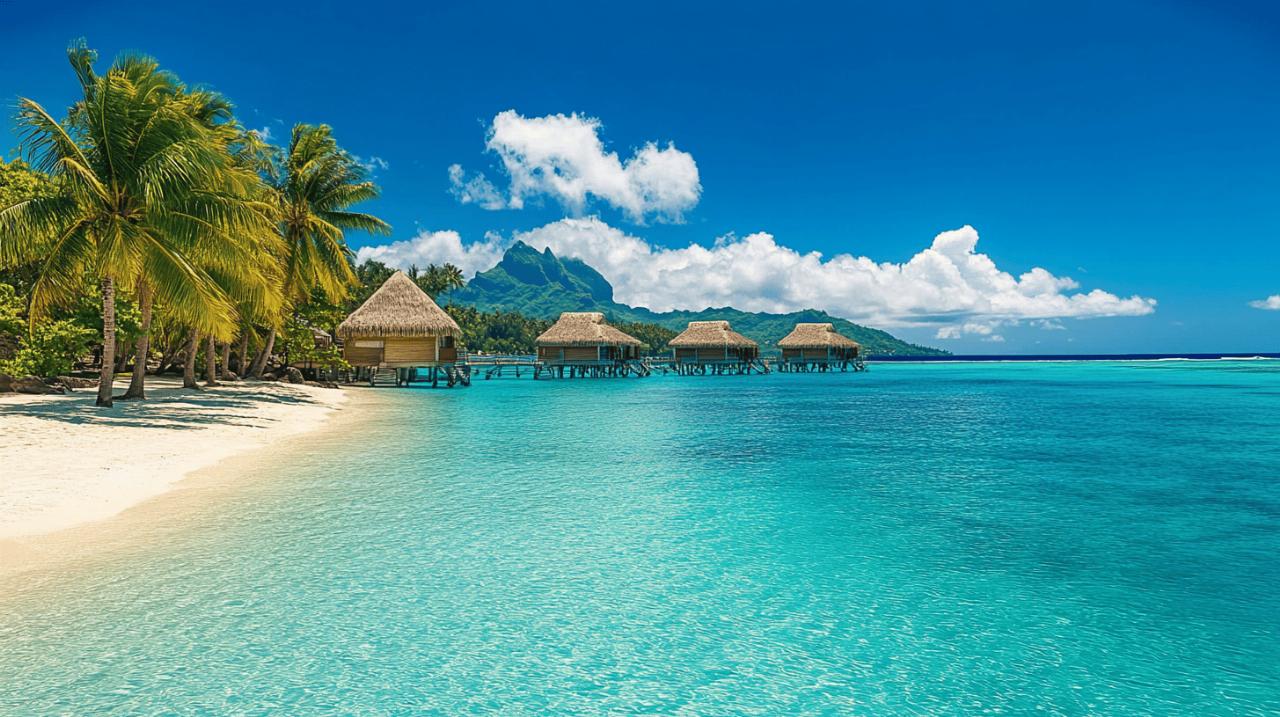Planning a journey to Tahiti can feel like preparing for a dream, but understanding the financial commitment is essential before you set off. French Polynesia, with its iconic turquoise lagoons and lush volcanic peaks, is undeniably one of the most breathtaking destinations on earth. However, this South Pacific paradise requires careful budgeting to ensure your adventure is both memorable and manageable. From flights and accommodation to daily expenses and essential health preparations, knowing what to expect will help you make the most of your time in this extraordinary corner of the world.
Getting there: flight costs and booking strategies
Average Return Flight Prices from the UK to French Polynesia
Reaching Tahiti from the United Kingdom involves a considerable journey, and the cost of flights will likely be the single largest expense of your trip. Return tickets from London or other major UK cities to Papeete, the capital of French Polynesia, typically range from approximately nine hundred and fifty to two thousand seven hundred pounds per person, depending on the time of year, the airline, and the class of service you select. Airlines such as Air Tahiti Nui, Air Canada, and French Bee offer routes to Papeete, often with one or more connections along the way. Shopping around for deals and remaining flexible with your travel dates can help you secure a more competitive fare. Business or premium economy cabins will naturally push the price higher, while economy fares booked well in advance during quieter periods can offer better value.
Peak Season vs Off-Peak Season: When to Book for Best Value
Timing your visit to French Polynesia can have a significant impact on your overall budget. The dry season, which runs from mid-April to mid-October, is considered the best time to visit in terms of weather, but it also coincides with higher demand and elevated prices. July and August, in particular, see the steepest costs for both flights and accommodation, as families and holidaymakers flock to the islands during the summer months. If you are looking to stretch your budget further, consider travelling during the shoulder seasons of April to June or September to November. During these periods, you can enjoy pleasant weather, fewer crowds, and noticeably lower prices across the board. Booking your flights and accommodation during these windows can save you several hundred pounds and make a considerable difference to your overall expenditure.
Where to Rest Your Head: Accommodation Options and Price Ranges
Budget-Friendly Hotels and Mid-Range Resorts in Tahiti and Moorea
Accommodation in French Polynesia spans a wide spectrum, from basic guesthouses to luxurious resorts, and your choice will greatly influence your daily spending. In Papeete, the main hub on Tahiti, you can find hotels starting at around one hundred pounds per night, offering comfortable rooms and convenient access to local amenities. For travellers seeking a more immersive experience, pensions and guesthouses on islands like Moorea provide a charming alternative at a lower cost. These family-run establishments often include breakfast and offer lagoon access, with prices ranging from one hundred and seventy to two hundred and thirty pounds per couple per night. Boutique resorts such as Linareva Resort in Moorea or Fare Pea Iti in Taha'a offer kitchens and a more homely feel, allowing you to prepare some of your own meals and reduce dining expenses. The Maitai hotel chain is another reliable option for those seeking respectable comfort without the premium price tag of the larger international chains like the Intercontinental.
Luxury Overwater Bungalows in Bora Bora: What to Expect Cost-Wise
For many, the allure of French Polynesia lies in the iconic overwater bungalows that seem to float above the crystal-clear lagoons. Bora Bora is particularly renowned for these spectacular accommodations, but they come with a substantial price. During the off-peak season, you might find overwater bungalows starting at around eight hundred Canadian dollars, or approximately five hundred pounds, per night. In peak season, however, expect to pay considerably more, with some luxury resorts charging well over a thousand pounds per night. These properties often include spa facilities, private terraces, and stunning views of the surrounding lagoon and Mount Otemanu. While the experience is undeniably special, it is worth considering whether a night or two in such accommodation is sufficient, allowing you to balance luxury with more affordable options elsewhere in your itinerary.
Daily Spending: Activities, Food, and Transport Costs Across the Islands
Excursions and Water Activities: Diving, Boat Trips, and Historical Tours
 French Polynesia offers a wealth of activities, many of which involve exploring the stunning natural environment. Snorkelling and diving are among the most popular pursuits, with many resorts providing complimentary kayaks and snorkelling gear for guests. However, organised excursions such as boat trips, quad biking, jet skiing, and guided diving expeditions will incur additional costs. A daily budget of around one hundred and twenty pounds per adult for activities is a reasonable estimate if you plan to participate in several paid experiences. Some resorts offer package deals that bundle accommodation with activities, which can sometimes work out more economical than paying for each separately. For those keen to explore historical and cultural sites, such as the ancient temples of Raiatea or local museums and gardens, entrance fees are typically modest, making them an accessible addition to your itinerary. To maximise your budget, take advantage of the many free activities available, including hiking volcanic trails, relaxing on pristine beaches, and exploring local markets brimming with fresh produce and handmade crafts.
French Polynesia offers a wealth of activities, many of which involve exploring the stunning natural environment. Snorkelling and diving are among the most popular pursuits, with many resorts providing complimentary kayaks and snorkelling gear for guests. However, organised excursions such as boat trips, quad biking, jet skiing, and guided diving expeditions will incur additional costs. A daily budget of around one hundred and twenty pounds per adult for activities is a reasonable estimate if you plan to participate in several paid experiences. Some resorts offer package deals that bundle accommodation with activities, which can sometimes work out more economical than paying for each separately. For those keen to explore historical and cultural sites, such as the ancient temples of Raiatea or local museums and gardens, entrance fees are typically modest, making them an accessible addition to your itinerary. To maximise your budget, take advantage of the many free activities available, including hiking volcanic trails, relaxing on pristine beaches, and exploring local markets brimming with fresh produce and handmade crafts.
Dining Out and Local Markets: Budgeting for Meals in French Polynesia
Food costs in French Polynesia can vary widely depending on where and what you choose to eat. Dining at hotel restaurants or established eateries will typically cost between twenty and fifty pounds per meal per person, reflecting the high import taxes on goods brought to the islands. However, one of the joys of visiting Tahiti is the opportunity to sample local cuisine at roulottes, the vibrant food trucks that gather in Papeete and other towns each evening. Meals from these mobile kitchens are hearty, flavourful, and relatively affordable, costing around fifteen pounds per person. For those looking to keep costs down further, shopping at local markets and supermarkets is a practical option. While prices are higher than in the UK due to the remoteness of the islands and the need to import many goods, buying fresh local produce such as fruit, seafood, and vegetables can help you save considerably. Preparing some of your own meals, particularly if your accommodation includes a kitchen, allows you to enjoy the freshest ingredients while keeping your daily food budget in check.
Health and Safety Essentials: Preparing for a Safe Trip to Tahiti
Recommended Vaccinations and Travel Insurance for French Polynesia
Before embarking on your journey to Tahiti, it is essential to ensure that your health preparations are in order. French Polynesia does not generally require specific vaccinations for travellers arriving from the United Kingdom, but it is advisable to be up to date with routine immunisations such as measles, mumps, rubella, and tetanus. If you plan to visit more remote islands or engage in activities that may bring you into close contact with nature, consider consulting a travel health clinic for tailored advice. Travel insurance is absolutely essential for any trip to French Polynesia, as medical facilities, while available, can be limited outside of Papeete. Comprehensive travel insurance should cover medical emergencies, evacuation, trip cancellations, and lost luggage. Given the high cost of medical care and potential evacuation by air to more advanced facilities, skimping on insurance is not advisable. Ensure your policy is valid for the full duration of your stay and covers all the activities you plan to undertake, including water sports and adventure excursions.
Staying Safe in the Lagoon: Water Safety Tips and Medical Facilities
The lagoons of French Polynesia are among the safest and most inviting in the world, but it is still important to exercise caution. Always snorkel or swim with a buddy, and be mindful of currents, coral, and marine life. Most resorts provide safety briefings and equipment, so take advantage of these resources. If you are not a confident swimmer or are unfamiliar with ocean conditions, consider hiring a guide for water-based activities. In the event of a medical emergency, the main hospital in Papeete is well-equipped to handle most situations, but more serious cases may require evacuation to New Zealand or Australia. Smaller islands have basic clinics, but access to advanced medical care can be limited. Carrying a basic first aid kit, including sun protection, insect repellent, and any personal medications, is a sensible precaution. Staying hydrated, avoiding excessive sun exposure, and being aware of your surroundings will help ensure your trip remains safe and enjoyable from start to finish.



